As Chicago’s energy demands grow—especially during hot summer days and freezing winters—so does the strain on the power grid and your utility bills. But did you know that when you use electricity can be just as important as how much you use?
Time-of-use (TOU) electricity plans offer a smart way to manage energy consumption and costs. By simply shifting activities like laundry, dishwashing, and electric vehicle charging to lower-demand hours, you could save real money while helping ease pressure on the grid.
Here’s how time-of-use plans work, how they benefit both you and the environment, and what Chicago residents need to know to get started.
What Is a Time-of-Use Electricity Plan?
A time-of-use (TOU) plan charges different rates for electricity depending on the time of day and the level of demand on the power grid.
- Peak hours (usually late afternoon to early evening) cost the most because that’s when demand is highest.
- Off-peak hours (typically overnight and mid-day) offer the lowest rates.
- Some plans also include mid-peak rates for transitional times.
Rather than paying a flat rate for every kilowatt-hour (kWh), TOU plans reward you for using electricity when it’s cheaper to produce and deliver.
Why TOU Plans Make Sense in Chicago
With Chicago’s mix of cold winters and hot summers, energy demand spikes during certain hours—especially when residents are running heaters, air conditioners, or charging electric vehicles.
By encouraging residents to shift energy usage to off-peak times, TOU plans:
- Help reduce peak demand and lower the risk of blackouts
- Improve grid stability and reduce reliance on fossil fuel peaker plants
- Encourage smarter, more conscious energy use
- Save you money if you’re able to adjust your routine
Real-Life Examples of How to Save
Here are simple changes Chicagoans can make to take advantage of lower TOU rates:
- Laundry: Run washers and dryers after 9 PM or before 11 AM.
- Dishwashing: Use your dishwasher’s delay setting to start it overnight.
- EV Charging: Set your vehicle to charge between midnight and 6 AM.
- Heating & Cooling: Pre-cool or pre-heat your home during off-peak hours when possible, then let smart thermostats maintain comfort.
Even modest changes can lead to noticeable savings on your bill, especially during the summer.
Who Offers Time-of-Use Plans in Chicago?
Chicago-area residents serviced by ComEd may have access to the Hourly Pricing or Peak Time Savings programs:
ComEd Hourly Pricing
- Offers electricity at prices that change hourly based on wholesale market rates.
- Best for customers who can shift usage or monitor rates via an app or smart home system.
ComEd Peak Time Savings
- Credits your bill when you reduce usage during high-demand “peak events” (usually summer afternoons).
- No risk: your regular rate doesn’t increase if you don’t participate.
These programs are free to join and include tools and support to help you adjust your habits.
Tools to Help You Manage TOU Plans
To make the most of time-of-use rates, consider:
- Smart thermostats that pre-cool or pre-heat your home.
- Appliance timers or delay-start functions.
- Energy monitors or ComEd apps that alert you to peak times.
- Smart plugs to control when devices are powered.
These tools make it easier to automate your savings without sacrificing comfort or convenience.
Important Considerations Before You Switch
While TOU plans can lead to savings, they aren’t ideal for every household. Here are a few things to think about:
- If you’re home all day and need consistent energy use, savings may be limited.
- If you already use little energy, a flat-rate plan may not cost much more.
- TOU plans reward flexibility—so they work best if you can shift your habits.
It’s worth using ComEd’s online calculator or speaking to a representative to see how your current usage compares under different rate plans.
Time-of-use electricity plans offer a simple, cost-effective way for Chicago residents to take control of their energy bills and reduce environmental impact. By shifting your power use to off-peak hours, you’ll not only save money—you’ll help create a more reliable, efficient, and sustainable energy system for our city.


